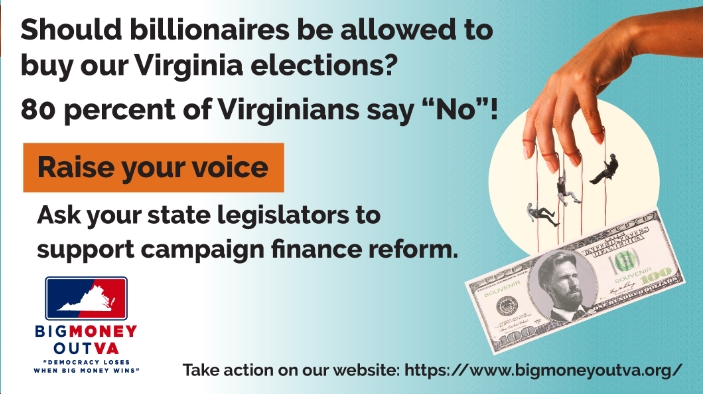
Eliminating Electricity Imports at Same Time Would Double Job Gains
Mix of new temporary construction and permanent jobs would peak at 5,700 under basic scenario, but reach 12,600 jobs if investments also aim to keep utility spending in the state – a number nearly equal to employment in Virginia’s commercial construction sector.
[Richmond, VA, and Washington, D.C.] – A new report analyzing scenarios for Virginia’s compliance with the U.S. EPA’s Clean Power Plan to reduce carbon emissions from the electric power sector shows that the Commonwealth could create thousands of permanent and temporary jobs by making investments to diversify its power sources with renewable energy, energy efficiency, and natural gas generating plants – and more than double the new jobs if the state pursued a long-sought goal of eliminating electricity imports from out of state.
The new report, Assessing Virginia’s Energy Future: Employment Impacts of Clean Power Plan Compliance Scenarios, was prepared by Meister Consultants Group for the Advanced Energy Economy Institute and the Virginia Advanced Energy Industries Coalition. The full report is available for download at http://info.aee.net/virginia-energy-future.
“This analysis shows the job creating value of putting advanced energy technologies to work in Virginia under the Clean Power Plan,” said Graham Richard, CEO of Advanced Energy Economy, a national business group, and the AEE Institute, its nonprofit educational affiliate. “Deploying these technologies in Virginia to also reduce imports creates even more jobs while keeping precious energy dollars in state supporting economic growth. This report should be a road map for Virginia’s energy future.”
“We have an opportunity to significantly increase employment in Virginia while achieving a lower risk energy portfolio, greater grid resiliency, and satisfying the significant and growing demand for clean, advanced energy,” said Francis Hodsoll, Board President of Virginia Advanced Energy Industries Coalition, a business group representing a range of energy technologies.“Given these findings, political and business leaders in Virginia should demand that Virginia develop a prudent pro-growthimplementation strategy.”
Under EPA’s draft Clean Power Plan, which is expected to become final this summer, Virginia would be required to reduce its carbon emissions rate from electricity generation from 1,438 pounds per megawatt-hour (lb/MWh) to 810 lb/MWh by 2030. EPA set that target based on the agency’s calculation of the state’s ability to take measures such as increasing the efficiency of existing coal-fired power plants, shifting generation to natural gas-fired plants with unused capacity, developing more renewable energy capacity (along with maintaining nuclear capacity), and increasing the efficiency of energy use.
In Assessing Virginia’s Energy Future, Meister Consultants Group analyzed two of the many scenarios under which Virginia could meet EPA’s 2030 emissions rate target, and found that both would result in significant employment gains for the state compared with a “business as usual” scenario. As net new jobs created between now and 2030 would be a mix of temporary construction jobs and permanent positions, the report follows the convention used by economists to express employment gains in “job-years,” with one job in existence for one year equal to one job-year. Thus, a construction job that lasts for two years on a particular project would count as two job-years, while a permanent job created in 2021 and still in place in 2030 would count as nine job-years.
The Diversified Portfolio option, that achieves compliance by implementing changes already planned by utilities, most of the building block measures contemplated by EPA, some renewable energy, and greater energy efficiency, will result in more than 54,000 additional job-years by 2030. Net new jobs would peak in 2029, at 5,715 – a number approaching current employment in beverage and tobacco production in Virginia (6,800).
Job gains would more than double if the state chose to accomplish a frequently stated goal of keeping utility spending in the Virginia economy by eliminating electricity imports at the same time as it complied with the Clean Power Plan. Currently, Virginia gets a little less than 40 percent of its electricity from out of state. The state could reduce electricity imports to zero by 2030, as well as surpass EPA’s emissions target, with more renewable energy, energy efficiency, and natural gas resources.
Under the Import Reduction scenario, employment would get a boost of more than 120,000 job-years by 2030. Net new jobs under this scenario would peak in 2027, at 12,631 – nearly equal to existing jobs in commercial construction (14,000).
Job gains under both scenarios would be in addition to 7,964 job-years expected as a result of changes already planned by the state’s utilities (see Figure 1 attached). These include plans to retire or convert a substantial amount of coal-fired generation, implement some renewable energy and energy efficiency investments, and construct several high-efficiency natural gas combined cycle power plants. These changes reflect the changing economics of the electric power sector, and will also reduce Virginia’s emissions rate, helping the state reach its target under the CPP.
“After considering different compliance strategies, this report found that implementing the Clean Power Plan can lead to substantial direct job creation in Virginia,” said Wilson Rickerson, CEO of Meister Consultants Group, Inc., an independent international research firm. “These employment benefits will be greatly increased if the state adopts a compliance plan that aims to increase the state’s electricity independence.”
“Working with nearly 100 utilities across the nation and around the world, we have helped meet efficiency goals and lower costs to serve, while improving customer satisfaction,” said Richard Caperton, Director of National Policy & Partnerships atOpower, based in Arlington, Va. (NYSE: OPWR). “This report shows that innovative technology can help drive significant energy savings and create thousands of jobs for the state of Virginia.”



 Sign up for the Blue Virginia weekly newsletter
Sign up for the Blue Virginia weekly newsletter








